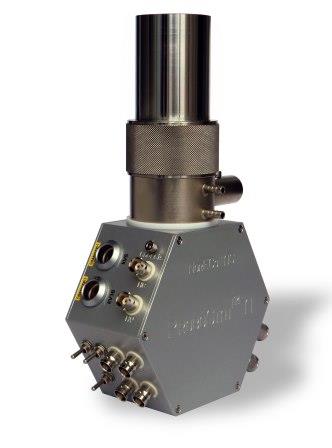|
Typical use:
The high-voltage system can also for regular characterization of dielectrics and electroceramics:
High voltage version of the ProboStat™ allows experiments with ferro- and piezoelectric materials. The ProboStat™ high voltage base unit is equipped with feedthroughs that tolerate >10 kV DC. The final tolerance in the sample compartment depends on the electrode and sample geometries, temperature, pressure and atmosphere, and the sample itself. We have tested the setup at various total pressures and temperatures using a 20 mm diameter, 3 mm thick alumina disk sample, and confirmed that the breakdown voltage follows mainly Paschen's formula. At atmospheric pressure the breakdown voltage is then limited to 5-9 kV DC by the distance between the electrodes. At elevated temperatures or lower pressures, the breakdown voltage decreases and plasma discharge arises. At further lowering of the pressure into the low-vacuum the breakdown voltage again rises (as predicted by Paschen's formula), and it is again possible to reach voltages exceeding 10 kV DC, also at elevated temperatures. This may be done by pumping on the normal base unit gas connections. Normally, it is the two outer chamber feedthroughs ("HCS" and "LCS") that are replaced by high voltage versions. Some changes from the normal ProboStat™ base unit are done in the wiring of shields, but otherwise the remaining feedthroughs are left as they are in the normal ProboStat™ base unit. |
|
|
|
The mini-contact zones of the high voltage feedtroughs should be covered with slide-on alumina tubes supplied with the system. When using a thermocouple in a cell carrying high voltages, the thermocouple should be covered by the envelope alumina tube that we supply. This will prevent high-voltage discharge to the thermocouple. Naturally, the user is responsible for all further precautions required to protect users and connected instrumentation toward possible high-voltage discharges. |
||


